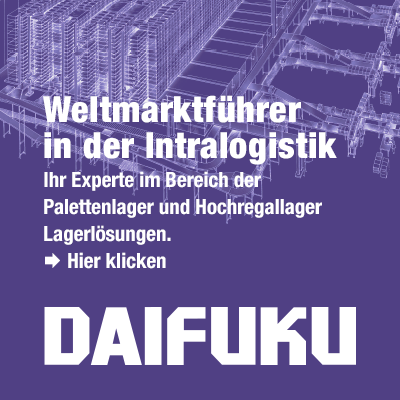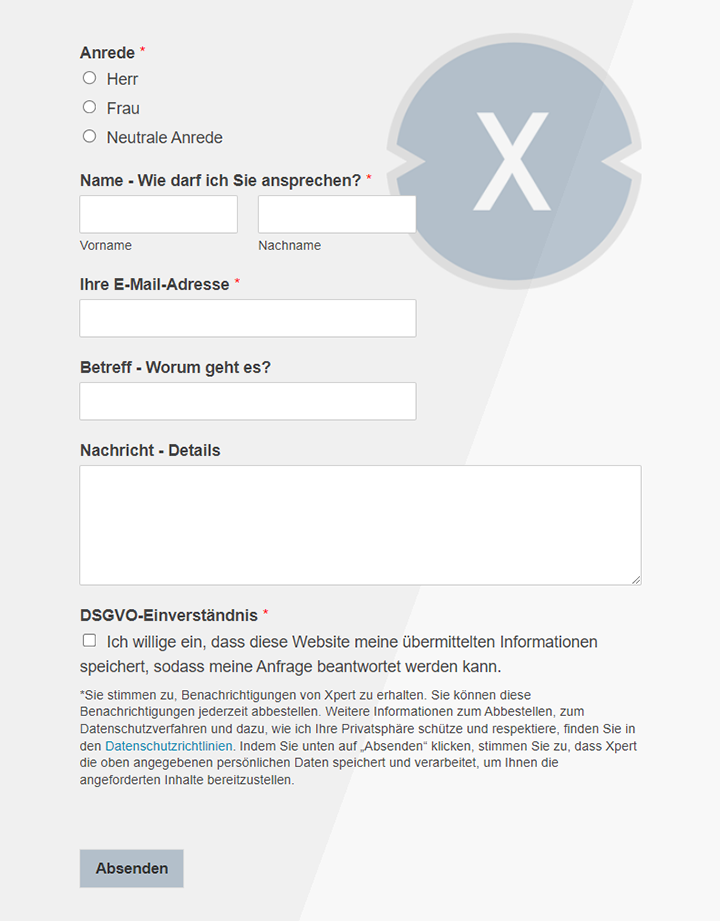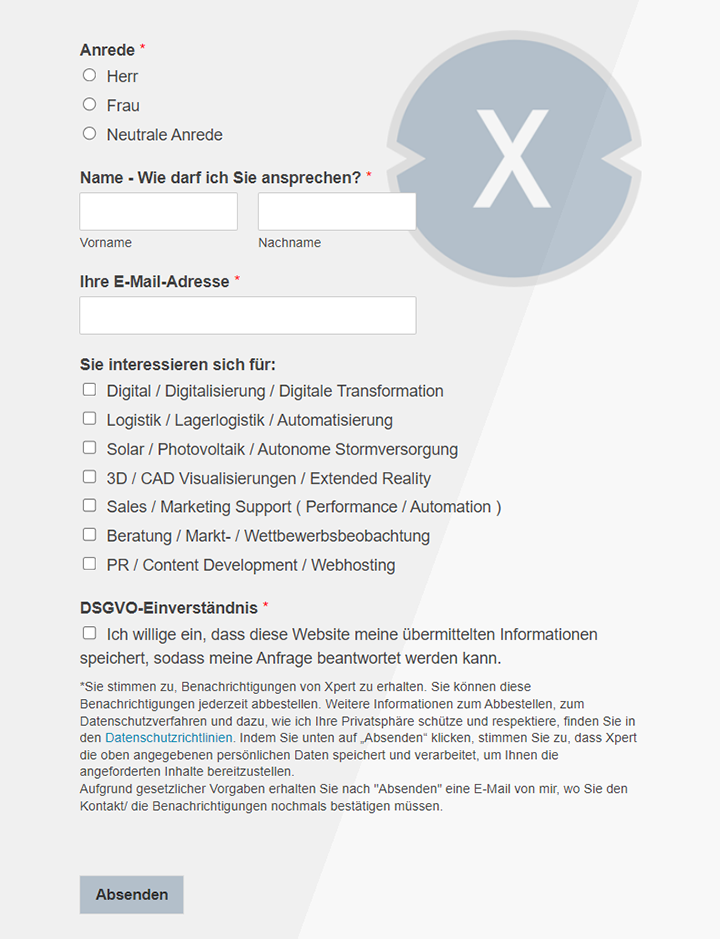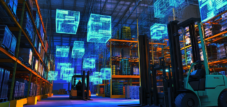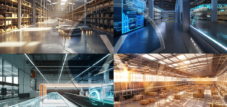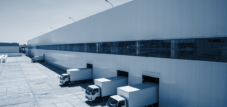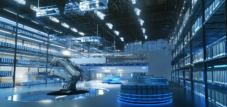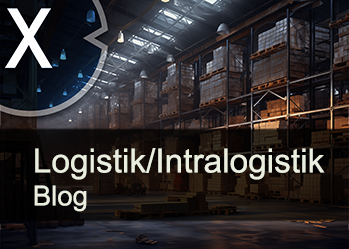Efficient warehouse automation: 25 important questions and answers for your optimization – tips on warehouse optimization and retrofitting
Xpert pre-release
Language selection 📢
Published on: January 10, 2025 / Update from: January 10, 2025 - Author: Konrad Wolfenstein

Efficient warehouse automation: 25 important questions and answers for your optimization – tips on warehouse optimization and retrofitting – Image: Xpert.Digital
Warehouse automation in the area of tension between optimization and retrofit: Paths to more efficiency, security and future viability
Warehouse automation in focus: optimization or retrofit – which is right for your company?
The modern logistics industry is under increasing pressure to make its processes more efficient, faster and more cost-effective. At the same time, customer expectations regarding delivery speed and reliability are continually increasing. In this context, warehouse automation is of crucial importance. But before companies consider a complete conversion of their systems, it is worth taking a closer look: targeted warehouse optimization is often enough to tap existing potential. In other cases, however, a careful analysis shows that the existing systems no longer meet the requirements. Then a so-called retrofit comes into play, in which existing systems are comprehensively modernized and adapted to current standards. The following explains in detail when warehouse optimization is sufficient, when a retrofit makes sense and why warehouse automation will be increasingly promoted in the future.
1. Why is efficient warehousing so important in modern logistics?
Efficient warehousing is extremely important for companies because the warehouse acts as a hub in the flow of goods. This is where products are received, stored, picked and ultimately shipped. A well-thought-out warehouse structure makes it possible to process orders promptly and reduce costs. This makes the warehouse a strategic success factor: Companies that optimize or modernize their warehouse processes benefit from faster delivery, higher throughput rates and lower error rates. However, anyone who sticks to outdated processes risks delivery difficulties, quality problems and competitive disadvantages.
2. What basic options are there to improve a warehouse - and how do warehouse optimization and retrofitting differ?
Warehouse optimization focuses on the targeted improvement of existing processes and structures without completely replacing the warehouse or individual machines. This can be done through software updates, layout adjustments or employee training. “Warehouse optimization usually results in lower costs and can quickly achieve noticeable effects.”
The retrofit goes a decisive step further: it includes a comprehensive modernization of existing technology and components. Controllers, drives and software are often replaced, bringing the warehouse up to date. “A retrofit significantly extends the lifespan of a system” and usually offers significant increases in performance and efficiency.
3. When does it make sense to simply carry out warehouse optimization?
Warehouse optimization makes sense if the warehouse is still well positioned in terms of its basic function: the mechanical components are intact, there are only a few malfunctions and the infrastructure basically still has reserves. In such cases, a selective improvement is sufficient, for example through:
- Software upgrades: Implementing or updating a warehouse management system (WMS).
- Layout adjustments: Optimization of shelf placement to reduce distances or make picking processes easier.
- Staff training: “Employee training plays a central role in using new systems efficiently and reducing error rates.”
- Minor technical improvements: Purchase of mobile scanners, data glasses or additional aids.
These measures are less cost-intensive and can often be implemented without major disruption to ongoing operations.
4. What typical measures does classic warehouse optimization include?
Warehouse optimization usually includes several sub-projects that can be combined as required:
- Introduction or improvement of the WMS: A modern warehouse management system controls and monitors all incoming and outgoing goods in real time.
- Optimized warehouse layout: A sensible arrangement of shelves and storage zones shortens walking distances and increases picking performance.
- Process Improvements: Analyze workflows, identify bottlenecks, and introduce new processes to make things run more smoothly.
- Training of employees: “Especially with new technologies, it is essential to train and instruct staff accordingly.”
- Use of mobile devices: Scanners, tablets or data glasses reduce error rates when picking and simplify the recording of incoming and outgoing goods.
Such optimizations often intertwine and improve the overall efficiency of the warehouse.
5. When should you think about a retrofit?
A retrofit is a particularly good choice if the warehouse is still structurally or mechanically solid, but no longer meets the requirements in terms of technology and control. The following situations clearly indicate this:
- Frequent disruptions and failures: If downtimes occur regularly, the risk of delivery delays and high repair costs increases.
- Difficult procurement of spare parts: If important parts are no longer produced, an event of damage can paralyze the entire company.
- Outdated security technology: “Outdated security systems often no longer correspond to the current state of the art and urgently need to be modernized.”
- Massive power or throughput requirements: If market requirements change and the order volume grows rapidly, the system must become more efficient.
- Excessive energy costs: Older motors and controls often use more energy than necessary. A retrofit enables the use of more efficient technologies.
6. What advantages does a retrofit bring with it – and how do they manifest themselves in practice?
The advantages of a retrofit are significant and affect both operational safety and economic efficiency:
- Cost savings compared to new construction: “A retrofit often only costs 30-70% compared to a completely new system.”
- Extending the service life: With the replacement of central components, the modernized bearing often lasts another 15-20 years and remains technically up-to-date.
- Higher system availability: Modern drives and controls reduce the risk of failures. Increases in availability of 20% or more are not uncommon.
- Increased performance: New software and hardware often enable capacity increases of 10-30%. This means more throughput and shorter processing times.
- Sustainability: Energy-saving technologies reduce electricity consumption and reduce CO₂ emissions.
- Future orientation: “A retrofit creates the basis for the use of modern technologies such as AI or AR.”
It is precisely the combination of increased productivity and cost reduction that convinces many companies to invest in modernization.
7. Are there any indications that companies can use to decide specifically whether an optimization or a retrofit makes more sense?
A structured approach is recommended for decision-making:
- Comprehensive analysis of the existing system: determining the condition of all components, recording failure statistics and checking the availability of spare parts.
- Assessment of the life cycle phase: If motors and control units have been in use for a long time, replacing them completely or partially as soon as possible can make more sense than minor repairs.
- Cost-benefit analysis: “A thorough calculation shows which option – optimization or retrofit – is cheaper and more future-proof in the long term.”
- Future-oriented planning: Considering growth plans, changing customer expectations and technological trends.
- Operational interruptions: While optimization can often be carried out smoothly during ongoing operations, a more extensive retrofit sometimes requires longer downtime phases. However, a good project plan can minimize downtime.
8. Why is warehouse automation becoming increasingly important and what are the benefits?
The demand for automated processes is constantly increasing because companies are faced with various challenges:
- Cost pressure and efficiency: Automated systems work faster and more precisely than manual activities, reducing error costs and personnel costs.
- Shortage of skilled workers: “Automation solutions compensate for the lack of qualified personnel by specifically relieving the burden on human labor.”
- Growing e-commerce: Short delivery times are required in online retail. Automated warehouses can assemble and ship orders in no time.
- Safety and ergonomics: Monotonous or physically demanding work steps can be taken over by machines, which reduces the workload on employees.
- Scalability and flexibility: Modern robots and conveyor systems can be more easily adapted to changing requirements than rigid, manual processes.
9. How will warehouse automation develop in the next few years?
“Warehouse automation will enter a phase of strong digitalization and networking.” The most important trends include:
- Advanced robotics and AI: Autonomous mobile robots and AI algorithms for predictive analysis, for example to detect spikes in incoming orders at an early stage.
- Collaborative robots (cobots): These machines interact directly with people without the need for rigid protective fences. Employees can concentrate more on complex tasks.
- Drones and inventory: Initial pilot projects are using drones in the warehouse to fly over shelves and digitally record item inventories.
- Virtual and augmented reality: Training for employees or maintenance processes can be made more efficient using virtual environments.
- Internet of Things (IoT): Sensors in shelves, bins and conveyor belts report real-time data to central systems, significantly improving control and maintenance.
- Blockchain: Transparency and security against manipulation in the supply chain could set new quality and security standards.
- Digital twins: A virtual replica of the warehouse in which changes and innovations can be simulated before they are implemented in reality.
- Sustainability: “Energy-efficient technologies and resource-saving concepts are becoming more and more important every year.”
10. What challenges do companies have to face with further automation?
With increasing automation comes several challenges:
- Investment costs and ROI: New technologies are often expensive. Companies must ensure that the acquisition costs are worthwhile in the long term.
- IT complexity: Automated systems are closely networked with other business areas and external partners. An IT failure can paralyze entire warehouse operations.
- Cybersecurity: “The more digitized a warehouse is, the more important protection against hacker attacks and data loss becomes.”
- Employee acceptance and training: Automation changes the field of activity of employees. Companies need professional change management to reduce fears and impart new skills.
- Scalability: Order volumes can increase dramatically, especially in e-commerce. Systems must be adaptable without failing at peak loads.
11. Why is a retrofit often the perfect time to increase the level of automation?
A retrofit includes a broad technical modernization step. “Outdated controls, motors or sensors are replaced and new software is integrated.” This is an opportune moment to incorporate further innovations, such as autonomous conveyor vehicles or AI-supported analysis tools. This is how companies can kill several birds with one stone:
- The system remains usable and achieves greater energy efficiency thanks to new components.
- The entire system benefits from current automation technology that would otherwise only have been implemented in a completely new building.
- Missing interfaces or outdated machines are a thing of the past, as the retrofit creates a uniform, modern system.
12. How can warehouse automation contribute to greater sustainability?
The use of new technologies in warehouse operations promotes more resource-efficient working methods:
- Energy-efficient components: Modern motors and controls use less electricity.
- Precise control and data collection: “Accurate recording of stocks and movements avoids overproduction and thus unnecessary energy consumption.”
- Reduction of empty trips: Intelligent route planning for robots and vehicles shortens routes and reduces wear.
- Longer service life of systems: Instead of building a completely new building, a retrofit avoids large consumption of resources for new components.
This not only reduces the ecological footprint, but also significantly reduces operating costs.
13. What role does flexibility play in the warehouse and how can companies respond to it?
The global economy is characterized by strong fluctuations in many areas. Companies must be able to respond to seasonal peaks, short-term order increases or unforeseen crises. A flexible warehouse is essential:
- Scalability: Automated systems should be modular so that new capacity can be easily added.
- Mobile robots: In contrast to static conveyor belts, they can be adapted to changing layouts without the need for major structural measures.
- Data networking: “Those who digitally link storage, production and transport can better identify load peaks and counteract them at an early stage.”
A future-proof warehouse design not only considers the current requirements, but also possible development scenarios.
14. How will the logistics industry in general develop - and what role will warehouses play in this?
“The logistics industry is facing a comprehensive transformation that is characterized by digitalization and automation.” In the future, the entire flow of goods will be even more closely interlinked. Bearings play a dual role here:
- Central hubs: Warehouses form hubs where flows of goods are bundled, sorted and distributed.
- Proactive control: Intelligent systems analyze customer needs, plan transports and ensure that enough inventory is available everywhere.
- Faster delivery times: E-commerce trends such as “same-day delivery” or “same-hour delivery” require highly dynamic warehouses with robots and automatic conveyor systems.
15. Can you give a practical example in which warehouse optimization and retrofit were successfully combined?
Assume that a medium-sized spare parts supplier for the automotive industry has been operating an automated small parts warehouse for several years. The shelves, conveyor belts and basic mechanics are basically still usable, but the software and controls are outdated. “Customers also want increasingly shorter delivery times and precise order tracking.”
- Analysis: A detailed examination shows that the mechanical basis is intact, but the control technology urgently needs to be renewed.
- Optimization: First, the layout of the picking stations is adjusted to shorten walking distances. Employees receive tablets and scanners to capture inventory data in real time.
- Retrofit: During ongoing operation, the conveyor system is equipped with new drives that are sensor-supported and controlled using modern software. AI-based image recognition is also installed to check the condition of the packaged goods.
- Result: “The throughput increases by around 25%, and system availability demonstrably increases by more than 20%.” The company thus achieves a significant improvement in its delivery performance.
16. How does the role of employees change in an automated warehouse?
Although automation partially replaces monotonous, physically demanding tasks, people remain indispensable:
- Operation and monitoring: Employees control and control automated systems instead of constantly moving goods themselves.
- Incident management: “When it comes to technical problems or complex decisions, human experience is still required.”
- Data analysis and process improvement: Employees use real-time information to continuously optimize processes and intervene proactively.
- Maintenance and servicing: Robots and machines must be checked and maintained regularly. Technical know-how and problem-solving skills are required here.
17. “Which strategies help to increase the acceptance of automation within the team?
So that new technologies are not rejected, well-thought-out change management is needed:
- Transparent communication: The goals of automation and the benefits for employees (relief from physically difficult tasks) should be clearly explained.
- Training and further education: “Those who can handle the new systems usually quickly recognize the advantages and actively participate.”
- Involvement of employees: Practitioners from everyday warehouse life can provide valuable information for improvements and should be involved in the process.
- Positive examples: Successful pilot projects or reference applications from other areas of the company strengthen trust in the technology.
18. Why is a modern warehouse without digital interfaces hardly conceivable these days?
The processes in the supply chain are becoming increasingly interconnected. Information about inventory levels, goods issues and delivery dates must be available in real time to enable optimal scheduling. If digital interfaces are missing, media disruptions and information gaps arise, which can lead to delays, incorrect deliveries and dissatisfied customers.
- ERP Integration: “A warehouse management system that communicates with the ERP system can process orders and order information seamlessly.”
- Real-time tracking: Sensors and barcodes continuously provide data on the status of the goods. Customers today expect to be able to track their delivery online.
- Automated reorders: If stock falls below a certain minimum level, the system automatically triggers an ordering process, which prevents bottlenecks.
19. To what extent does blockchain technology play a role in warehouse automation?
Blockchain is still a niche topic in logistics, but is gaining interest. Its benefit lies in the transparent and forgery-proof documentation of goods movements. All transactions are stored in a distributed ledger. “For example, it is possible to fully understand when a delivery was in which warehouse and what steps were taken.”
This can be crucial for sensitive goods such as medicines, expensive electronic items or food to guarantee quality and origin. Blockchain could also play a role in returns management in the future.
20. What is meant by 'digital twins' and why are they relevant for warehouse processes?
A “digital twin” is an exact virtual image of a real system. In relation to the warehouse, this means: every shelf, every conveyor line and every machine is modeled in software. This allows changes or new processes to be simulated without having to intervene in ongoing operations:
- Planning security: “Companies first test new layouts or automation solutions on the digital model before making changes in the real warehouse.”
- Bottleneck detection: The simulation shows where there could be backlogs or waiting times during peak times.
- Maintenance optimization: Using the data from the real bearing, the digital twin can predict the wear of components, which enables planned maintenance.
21. What does the future look like for delivery times and customer requirements, and what role does the warehouse play in this?
The demands on delivery speed and service are continually increasing. Customers in many industries expect:
- Fast deliveries: Same-day delivery or even delivery within a few hours.
- Availability: “Stockouts are hardly tolerated anymore; Otherwise customers will switch to the competition.”
- Transparency: Tracking information should be accessible at all times.
The warehouse becomes the place where these requirements must be implemented “in real time”: with highly automated picking processes, intelligent route planning for packing robots and smoothly coordinated handovers of incoming and outgoing goods.
22. Why is e-commerce considered one of the key drivers for warehouse automation?
Online retail continues to experience strong growth, which brings with it new challenges:
- Large variety of items: Online shops often offer thousands, if not millions, of products.
- High order frequencies: On peak days (e.g. Black Friday) the number of orders skyrockets.
- Strict delivery commitments: Customers expect orders to arrive within a few days or hours.
“Automated warehouse systems can better compensate for these fluctuations by working without breaks and absorbing bottlenecks more quickly.”
23. What should companies consider if they want to fundamentally digitalize their warehouse processes?
Comprehensive digitalization requires a clear project plan and appropriate skills:
- Define strategy: Should the warehouse be automated step by step, or should you aim for a comprehensive immediate solution?
- Prepare the IT landscape: “The software solutions must harmonize with one another and must not form isolated solutions.”
- Ensure data quality: Digital processes only work if the data collected is reliable and cleanly maintained.
- Involvement of employees: Employees should actively participate, from training to process design.
24. What conclusion can be drawn from all these considerations - and what does the future of the camp look like?
The warehouse of tomorrow will be highly automated, digitally networked and controlled in real time. Companies that make their systems fit either through consistent warehouse optimization or a comprehensive retrofit are laying the foundation for long-term competitiveness. The conclusion is:
- No two warehouses are the same: each company has to decide individually whether optimization is sufficient or whether a retrofit is more economical.
- People remain important: “Although robots take on many tasks, qualified employees are essential to monitor and optimize processes and advance new technologies.”
- Future orientation counts: Only those who pick up on trends such as AI, IoT and digital twins in a timely manner can remain responsive and meet customer demands.
- Sustainability and flexibility: Rising energy costs and growing sensitivity to environmental issues make resource-saving automation concepts indispensable.
25. Any final advice for companies having to choose between warehouse optimization and retrofitting?
“The key word is thorough planning.” Whether a step-by-step optimization or a comprehensive retrofit makes sense depends on many factors – including budget, time frame, technical condition of the system and future corporate strategy. A comprehensive analysis, a clear cost-benefit calculation and a look at the long-term development of the market are essential in order to make the best decision.
A targeted approach could be: first assess the current status and the optimization potential, then define the possible retrofit measures and finally set up a structured project with a clear schedule. In this way, errors and unforeseen costs can be avoided.
Overall conclusion
Warehouse optimization and retrofitting are not contradictory concepts, but rather tools that should be used appropriately to the situation. In both cases, the focus is on increasing efficiency, availability and competitiveness. Advancing warehouse automation plays a key role in meeting increasing customer expectations, reducing costs and mastering the increasingly complex requirements of the logistics industry. Companies that proactively address these issues create a decisive advantage in the market and lay the foundation for a sustainable, flexible and future-proof storage strategy.
Xpert partner in warehouse planning and construction
Warehouse automation: When is warehouse optimization enough and when is a retrofit necessary?
The decision between warehouse optimization and a retrofit presents a key challenge for many companies. At a time when efficiency and adaptability are key factors for success in logistics, making the right choice is crucial. This guide highlights the most important aspects, offers valuable insights and expands the topic with future-oriented perspectives.
Warehouse optimization: More efficiency with targeted adjustments
Warehouse optimization can be the right choice if the existing infrastructure is largely intact and only minor adjustments are needed to make processes more efficient.
When does warehouse optimization make sense?
- Technical integrity: The warehouse's mechanics and basic infrastructure are still functional and meet current requirements.
- Minimal adjustments: Only minor improvements or extensions are required.
- Process-focused goals: The focus is on increasing the efficiency of existing processes without extensive technological innovations.
- Budget constraints: A complete modernization or retrofit would be oversized or too costly.
Possible warehouse optimization measures
- Improving the warehouse management system (WMS): A modern WMS enables more precise control of warehouse processes and improves transparency.
- Optimizing the warehouse layout: The arrangement of shelves, picking stations and paths can bring significant efficiency gains.
- Employee training: Investing in staff training to make optimal use of existing resources.
- Use of mobile technologies: Smart glasses or mobile devices can provide real-time information and accelerate processes.
Retrofit: modernization instead of new construction
A retrofit is recommended when the existing infrastructure no longer meets the requirements, but a completely new system is neither necessary nor economical.
When is a retrofit necessary?
- Age of the system: The existing systems are outdated, which leads to malfunctions or downtimes.
- Spare parts problems: Spare parts are difficult to obtain or are expensive.
- Increased operating costs: Inefficiencies drive up running costs.
- Security risks: New security standards can only be met through modernization.
- Technological requirements: The integration of new technologies such as automation or digital systems is necessary.
Advantages of a retrofit
A retrofit offers numerous benefits, including:
- Cost efficiency: The costs are typically between 30-70% of a new building.
- Service life extension: The system service life is increased by 15 to 20 years.
- Performance increase: Higher throughput rates from 10% to 30%.
- Energy efficiency: Improved technologies reduce energy consumption.
- Seamless integration: Modern technologies such as AI and AR can be easily integrated.
Decision making: optimization or retrofit?
The decision between warehouse optimization and a retrofit requires a comprehensive analysis. The following steps will help you make a decision:
- Analysis of the existing systems: Technical condition, efficiency and capacities must be assessed.
- Life cycle assessment: How long will the existing components still be economically viable?
- Business requirements: Are the current and future requirements for the warehouse known?
- Cost-benefit analysis: Which scenario offers the best returns?
- Impact on operations: How severely will ongoing operations be affected?
A retrofit is particularly recommended if the mechanical infrastructure is still solid, but controls, drives or software need to be modernized. Well-planned retrofits can even be carried out during ongoing operations.
Why warehouse automation?
The automation of warehouses is becoming increasingly important. The reason for this lies in the diverse benefits it offers and the challenges it addresses.
Increased efficiency and reduced costs
- Speed: Automated processes run up to ten times faster than manual ones.
- Cost reduction: Reduced personnel requirements and lower error rates reduce operating costs in the long term.
- Space savings: Up to 80% of storage space can be saved through compact automation solutions.
Overcoming challenges
- Shortage of skilled workers: Automation helps to compensate for the increasing labor shortage in logistics.
- Increasing customer expectations: Fast deliveries and high quality are becoming the standard.
- Flexibility: Automated systems adapt more quickly to market changes.
Improvement of working conditions
- Ergonomics: Employees are relieved of heavy or repetitive tasks.
- Safety: Dangerous activities are carried out by machines.
- Motivation: Collaboration with modern technologies increases satisfaction.
Future trends in warehouse automation
The future of warehouse automation will be shaped by innovation and technological advances. Here are the key trends:
Advanced robotics and AI
- Autonomous mobile robots (AMR): These robots offer flexible solutions for transport and order picking.
- Collaborative robots (cobots): Cobots work side by side with humans and can take on tasks such as packaging.
- Predictive analytics: AI-based systems optimize warehouse processes through real-time data analysis.
Matches:
Innovative technologies
- Drones: These can carry out inventory and potentially even transport goods.
- Virtual and Augmented Reality (VR/AR): These technologies support the planning of systems and the training of employees.
- Blockchain: For more transparency and security in the supply chain.
Suitable for:
Networking and data use
- Internet of Things (IoT): Sensors monitor and control warehouse processes in real time.
- Digital twins: Virtual models of the warehouse help to simulate and optimize processes.
- Seamless integration: Systems are networked together to ensure a smooth flow of information.
Sustainability and flexibility
- Energy efficiency: Automated systems reduce energy consumption.
- Decentralized warehouses: Smaller warehouses close to customers shorten delivery times.
- Scalability: Systems can be adapted to growing requirements.
Decision making is a strategic process
The decision between warehouse optimization and retrofit is a strategic process that depends on the specific needs of a company. Both approaches offer their own advantages and must be carefully planned. Looking ahead, it is clear that warehouse automation remains the key to competitiveness. Companies that invest in intelligent solutions now will secure long-term benefits in a rapidly changing world.
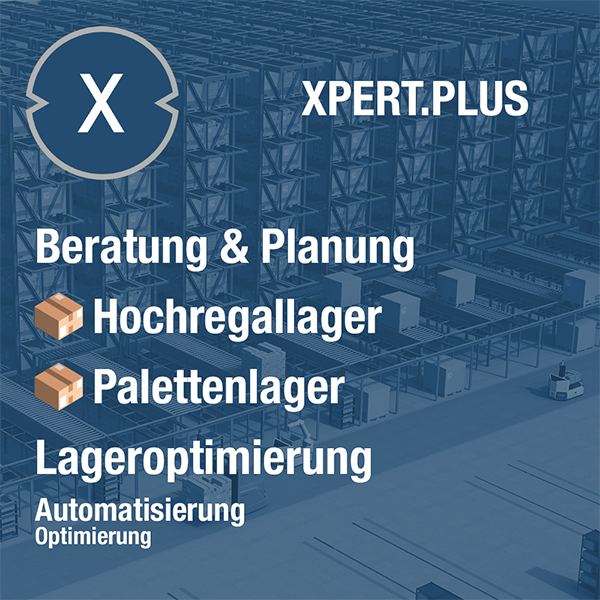
Xpert.Plus warehouse optimization - high-bay warehouses such as pallet warehouses consulting and planning
We are there for you - advice - planning - implementation - project management
☑️ SME support in strategy, consulting, planning and implementation
☑️ Creation or realignment of the digital strategy and digitalization
☑️ Expansion and optimization of international sales processes
☑️ Global & Digital B2B trading platforms
☑️ Pioneer Business Development
I would be happy to serve as your personal advisor.
You can contact me by filling out the contact form below or simply call me on +49 89 89 674 804 (Munich) .
I'm looking forward to our joint project.
Xpert.Digital - Konrad Wolfenstein
Xpert.Digital is a hub for industry with a focus on digitalization, mechanical engineering, logistics/intralogistics and photovoltaics.
With our 360° business development solution, we support well-known companies from new business to after sales.
Market intelligence, smarketing, marketing automation, content development, PR, mail campaigns, personalized social media and lead nurturing are part of our digital tools.
You can find out more at: www.xpert.digital - www.xpert.solar - www.xpert.plus



